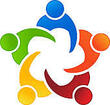 Adapted from samndan.com/child-safety/ Kids. They are masters of chaos, and they are our everything. For parents, guardians, and caregivers, keeping them safe is a daunting task and our number one priority. Unfortunately, accidents and injuries happen, and the most recent available statistics from the Centers for Disease Control and Prevention (CDC) are sobering.
Quicklinks
0 Comments
 By Cheryl Conklin, guest columnist [email protected] Remote working can be a blessing. Remote working with kids? Not so much. If you’re trying to balance a professional life with a newborn baby or toddler, you’ll need to get resourceful - here are a few of our best strategies to help.
1. Set Realistic Goals When you’re dividing time between work and a baby/toddler, it’s unlikely that you’re going to be able to put in a (good) 8-hour shift. With this in mind, try to set more realistic targets so as not to invite feelings of disappointment and frustration. This could mean segmenting larger projects into smaller, more manageable tasks and setting new, attainable standards of quality. With the right compartmentalization, you may even find you’re achieving more in the aggregate. 2. Be Comfortable Considering the range and variety of tasks you’re spreading yourself over throughout the day, it pays to pick clothes in the morning that you know will be comfortable. For new moms, this could mean opting for a dress with soft, stretchable fabric and a nursing panel (this is useful for nursing and pumping away from home). Hoodies and tracksuits also make for warm, flexible choices, and you won’t worry about getting them messy. If you have meetings and need to jump on a video call, the ‘work mullet’ has proven effective ever since the beginning of the pandemic. 3. Toy Management One of your best assets when it comes to juggling working and parenting are the toys your child can play with independently. It’s important, therefore, to think strategically about when you’re providing access and to which items. Having everything available all at once could quickly prompt distraction and stimulus overload, leading to trouble. Instead, try to stagger access throughout the week, with toys on a constant rotation. 4. Screens On that same note, we have screens. Almost all parents in the 21st century utilize them at some point, but too many cartoons can create unhealthy dependency or problems of a different nature. Instead, save this past time for when it’s absolutely essential that your child stay occupied - during work meetings, for example. With tactical usage, you can avoid creating an addiction and still reap the greatest benefits of their being otherwise absorbed during critical work times. 5. Bring In Support If you have friends, family, or significant others who can or want to help out, don’t be shy about reaching out - as they say, it takes a village to raise a child. When someone says, “If there’s anything that I can do, just let me know,” don’t be shy about bringing in support. Extra hands can be crucial if you want to keep your child stimulated without dropping your work performance. If you don’t have anyone available in your immediate social circle, it can sometimes be worth hiring extra hands (such as cleaners) to carry out the menial tasks and lighten the load. 6. Prioritize Ultimately, your kids are the priority. If you’re overloaded with work, you may need to plan in advance when and how you’ll spend time with them. Use your active listening skills to understand their feelings and then problem-solve with them to come up with do-able options. This could mean reading bedtime stories, including them in chores, planning days out, or simply joining them for playtime. Priortizing and a spot of organizing are often the solution for a better work/life balance. Parenting is full-time, whether you go out to work, but especially when you’re trying to earn a living at home simultaneously. If you want to manage both and stay sane in the process, you’ll need to think tactically about time and plan your routine well in advance. Dr. Robinson is a Christian psychologist, author, radio personality, and speaker who provides biblical resources and practical tools for better mental health, family life, and parenting. Learn more about his work at: www.thereformykids.com guest article by nvision, www.nvisioncenters.com |
Archives
January 2024
Categories
All
|

 RSS Feed
RSS Feed
